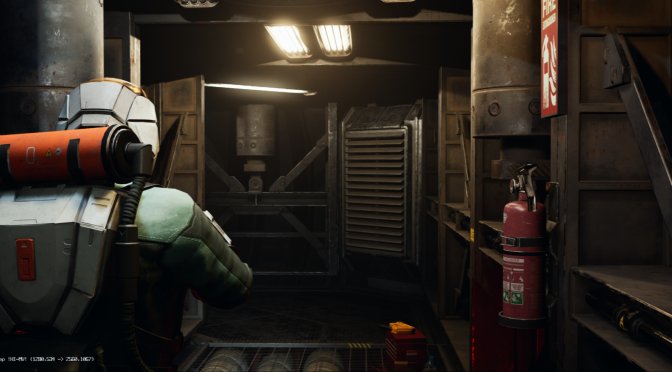In 2019, we informed you about an indie sci-fi horror game that was inspired by the first Dead Space game, Negative Atmosphere. And yesterday, Sunscorched Studios shared a brand new gameplay trailer for it.
Negative Atmosphere uses Unreal Engine 4 and features a third-person perspective. The game will put a lot of emphasis on horror mechanics and high tension fluid combat gameplay. Moreover, the game will be set in a universe in the midst of a cold war, in which A.I has been achieved via the use of organic processing cores. You play as Samuel Edwards; a 49-year-old ex-combat medic aboard the long-range cargo and haulage ship the TRH Rusanov,
As its description reads:
“In Negative Atmosphere, a mysterious sickness spreads across the ship causing all the robots and personnel to mutate and deform into hideous creatures. These creatures are hell-bent on the destruction of all the organisms around them. Therefore, players must escape, fighting their way through their former crewmates, rogue and sentient artificial constructs and the environmental hazards the Rusanov presents. Furthermore, and as players progress throughout the game, their mental state will deteriorate and the hallucinations will set in.”
According to its official screenshots on Steam, the game will support NVIDIA’s DLSS tech. However, we don’t know whether it will also support any Ray Tracing effects.
Unfortunately, there is still no ETA on when the game will come out.
Enjoy and stay tuned for more!

John is the founder and Editor in Chief at DSOGaming. He is a PC gaming fan and highly supports the modding and indie communities. Before creating DSOGaming, John worked on numerous gaming websites. While he is a die-hard PC gamer, his gaming roots can be found on consoles. John loved – and still does – the 16-bit consoles, and considers SNES to be one of the best consoles. Still, the PC platform won him over consoles. That was mainly due to 3DFX and its iconic dedicated 3D accelerator graphics card, Voodoo 2. John has also written a higher degree thesis on the “The Evolution of PC graphics cards.”
Contact: Email

